The conference is officially over, and we are leaving Chalmers to get back to Gothenburg city to see what it is all about. It has been a good conference!




The conference is officially over, and we are leaving Chalmers to get back to Gothenburg city to see what it is all about. It has been a good conference!



The conference is just about to be over and we are at the award ceremony. And even though none of us won anything, we are proud to say that our excellent P.A., Tobias, got the second place with their concept, Ski’n'Pee!
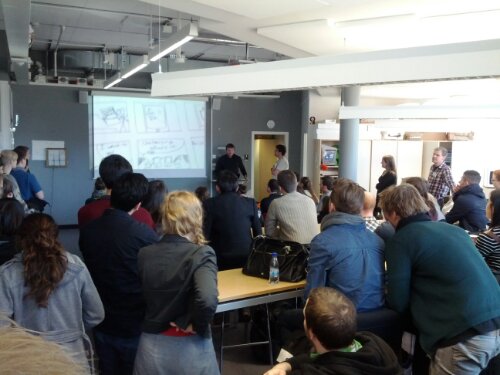
The end of the first day is closing in on us, and we have all been decided into teams and are working on design and prototypes for the workshop project. In short, we have to design some new experiences for the people coming to the Alpine World Cup in Austria next year..
We are right now at the opening talk about gamification and first impressions are good.


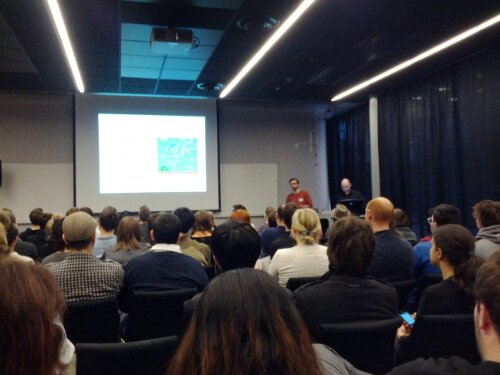
Our article has been accepted at the Student Interaction Design Research 12 conference in Gothenburg, and we have arrived by ferry today.
The weather is great and we are enjoying the city already. Here are some pictures of our arrival…

Kuggen seen from the ferry

Departing the ferry

In Gothenburg

Church in Gothenburg

Tobias in our room
Last Thursday we carried out the first user tests. The test consisted of a driving simulator setup where we tested the interface of both the app and the rest of the car, in driving situations.
The main purpose of the test was to get feedback on the design of both the interface on the steeringwheel and in the app we had developed.
All tests where done with the user sitting in the simulator, so they had some feeling of being in the car, and the actual cars design was presented to the user before the test began. And even though our steeringwheel implementation had a lot of lag, especially at high speeds, the quickly adapted to the setting and understood the task.
To get some fresh ideas from the test users, we started the test with a clean steeringwheel and smartphone window, allowing them to think freely and do what ever they wanted with the interface. This gave us some ideas on how the users (ranging from experienced drivers some who only drive a few times each year) would lay out the buttons and interface with the simple restrictions given by law and EcoMove.
After spending some time driving and drawing the new interface we presented the current version as it looks by design of EcoMove and ourselves. We then compared it to the things the users had added, and tested whether the users were able to navigate to app we had designed.
The test were very successful, and the results have been boiled down into a small report, presented to EcoMove. Some of the results will be shared here on the blog, after EcoMove has approved it.
A new page has been added to the site. The page contains a list of all the articles we have have used in our study.
Unfortunately for some of our readers, this page is only readable to our academic supervisor, as they will be available for download, and we are not allowed to distribute them outside the university.
We will look into making the same list available to the public, without download abilities.
Up until this point in the project, we have been surveying the research litterature for information on in-car interfaces, various kinds of interaction techniques and test results from related experiments.
In this post we will give a brief overview of some of the information collected during the survey, as well as a few examples of related commercial products and designs.
A number of articles focus on the implications of interacting with secondary devices (phones, navigation, radios etc.) while driving a vehicle. These implications include lack of concentration, time of attention off the road as well as other factors influencing the drivers ability to safely control the vehicle through traffic.
Experiments with different interaction techniques have been performed, in order to find the one(s), best suited for in-vehicle use. Among the researched techniques are haptic/physical, touch and gesture interfaces as well as voice recognition and vision tracking.
Research indicate that the voice and gesture based approaches are challenged by the fact that users have to remember a large number of gestures in order to operate the interface. Touch screen interfaces are not in the same way limited by this, as the display gives a visual clue of the available functions and to some extent also the possible actions.
Some suggest that a touch screen with support for gesture interaction is a promising approach in this particular use situation, which is not really surprising as the recent boom in smartphone sales, makes this type of interface common and well known among users.
The physical layout of the in-car controls and displays have been subject to experimentation as well and results indicate that input controls in the steering wheel work well and that displays should be placed in front of the driver or immediately to the right of the steering wheel (in left steered cars).
These results are good news for us, as the physical layout of the interior in the car in this project places the in-car interaction within the circumference of the steering wheel.
Below are a few screen dumps from a recent tv program about electrical cars in Denmark. These dumps are from a section about the specific car we’re working on.
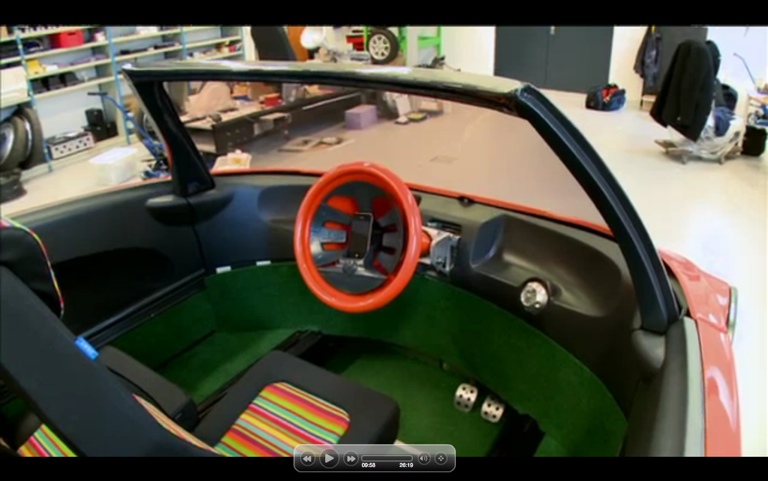
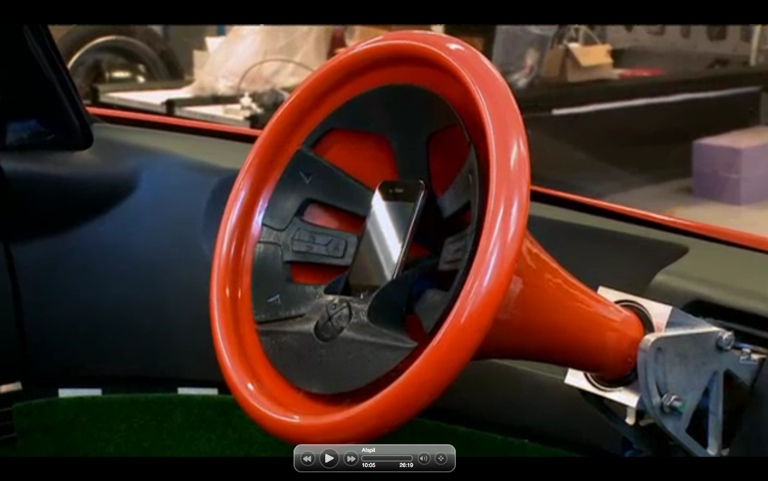
The concept of placing a smartphone in the center of the steering wheel and using it as the primary instrumentation display isn’t new, as Citroën presented the concept car Cactus in 2007, which does the same thing.
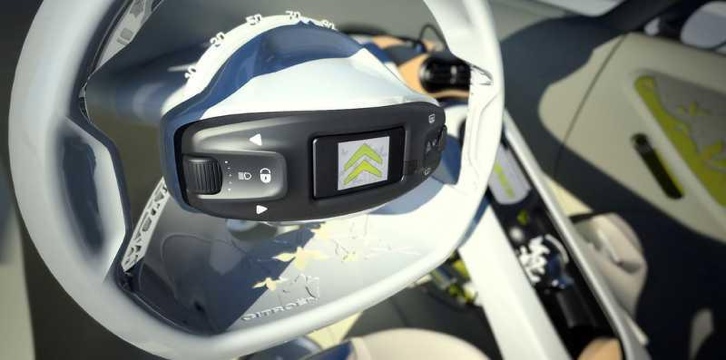
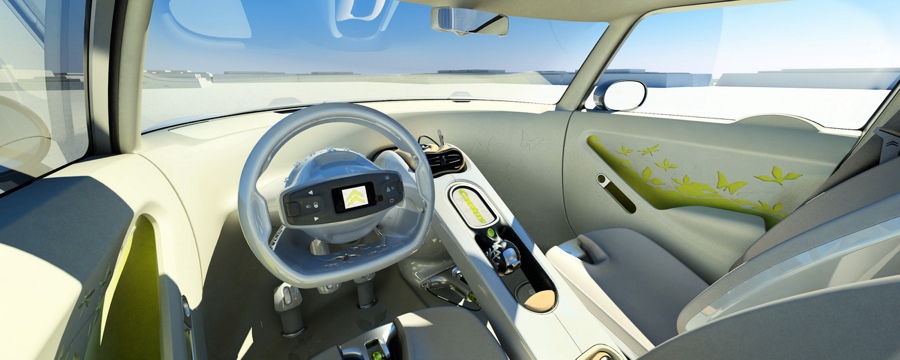
To mention a few other examples of car-smartphone integration, the Nissan Leaf electrical car has a matching smartphone app, which, amongst other things, shows the current charge level of the batteries and let’s the user control the in-car climate from a distance.
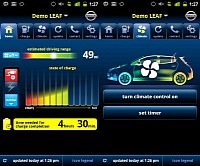
Another example is a retrofittable product which lets the user find, lock and start the car from a smartphone app. [http://www.voxcarlink.com]
Our further surveying might focus on cognitive psychology, as well as experiential factors of having a smartphone closely coupled to a car, in and outside the vehicle.